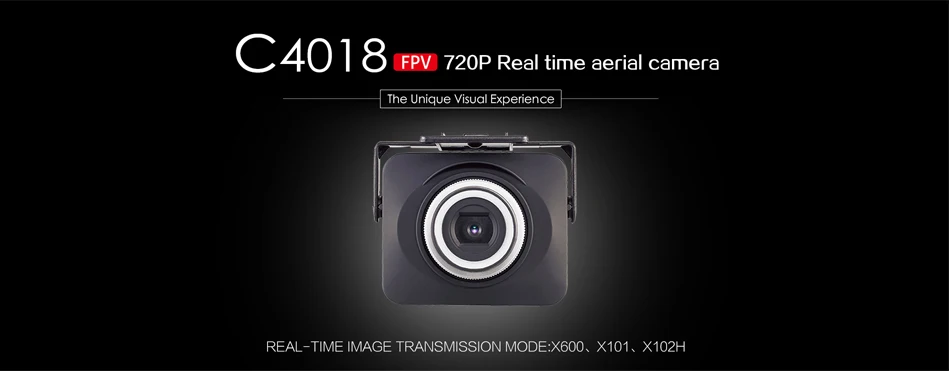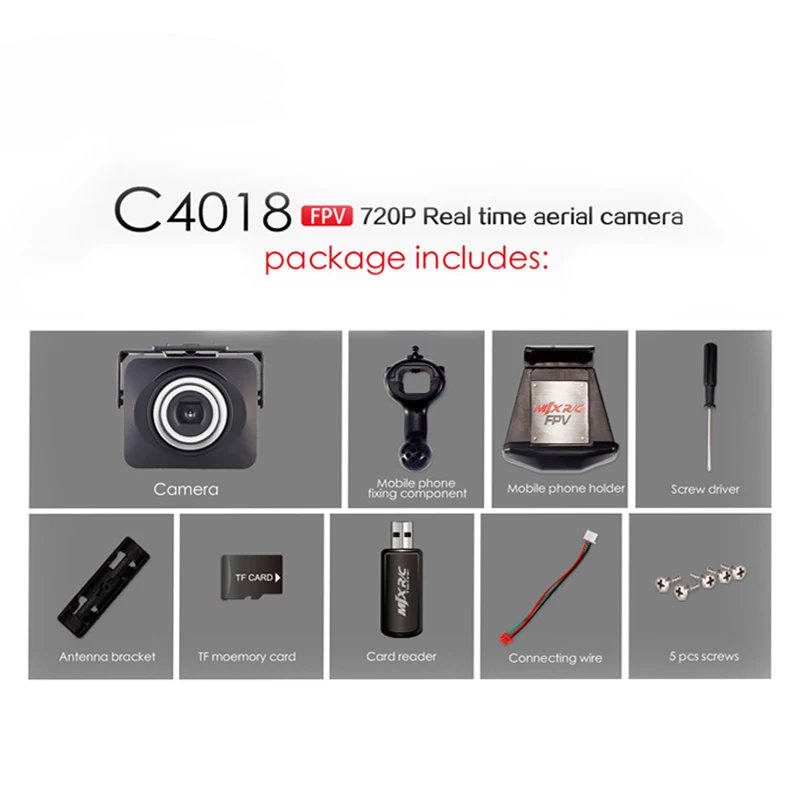This camera drone may be the easiest to setup and fly as compared to similar GPS drones in its price range. It's ready to fly within seconds of plugging in its battery. Buy it here http://www.gearbest.com/rc-quadcopter...
Pros
- Very accurate GPS system (actually uses both US GPS and Russian GLONASS satellites). It has rapid GPS/GLONASS lockon. Ready to go in seconds.
- Very responsive flight control board. Readily and rapidly responds to changes in wind gusts to keep the aircraft stationary in space.
- Does not require compass calibration
- Very simple easy to understand controller.
- Three flight modes: Manual provides sporty and fast flying, Altitude hold provides stable flight for aerial video for flying without a stabilizing gimbal, and GPS position hold provides ease of flight.
Cons
- Controller flight mode switch is mislabeled. Up position 1 is manual, center position 2 is altitude hold, and bottom position 3 is GPS position hold.
- Requires FAA registration.
Vendor's Description:
Specifications
Brand: TOVSTO
Type: Quadcopter
Features: 360 Degree Surround,GPS
Motor Type: Brushless Motor
Functions: Forward/backward,FPV,Hover,Low-voltage Protection,One Key Automatic Return,One Key Landing,One Key Taking Off,Turn left/right,Up/down
Built-in Gyro: 6 Axis Gyro
Material: Carbon Fiber,Electronic Components,PC
Kit Types: RTF
Level: Advanced Level
Remote Control: 2.4GHz Wireless Remote Control
Channel: 6-Channels
Mode: Mode 2 (Left Hand Throttle)
Control Distance: 700-900m
Detailed Control Distance: 800m
Model Power: 1 x Lithium battery(included)
Battery: 11.1V 3S 2200mAh
Flying Time: 14-15mins
Charging Time (h): About 3 hours
Product weight: 0.810 kg
Product size (L x W x H): 29.00 x 29.00 x 17.00 cm / 11.42 x 11.42 x 6.69 inches
Package Contents: 1 x Quadcopter, 1 x Transmitter, 1 x Charger, 1 x Gimbal, 1 x 11.1V 3S 2200mAh Battery, 4 x Spare Propeller, 1 x Wrench, 3 x Tool, 1 x Accessory Set, 1 x Sticker Set, 1 x English User Manual
Camera Drones
Friday, 23 September 2016
Creepy camera: Drone over backyard raises questions about rules
We heard it before we saw it. That whine of blades slicing through the air like a whipper snipper through grass.
My husband and I exchange a look, a mixture of 'Oh no, not again' and 'You've got to be kidding me.'
Then it appears, that creepy roving eyeball with free rein of the neighbourhood. Instead of coasting through our backyard as those machines typically do, this one stops. It stops as abruptly as a Road Runner hitting its mark on a cliff's edge. Then, it actually backs up, and hovers, about 10 feet in front of and above our patio, and our faces.
We look at it. It looks at us. It feels like a bizarre staring contest with a Peeping Tom emboldened by anonymity.
My husband puts down the drill he was using to assemble fence post ornaments — handiwork I thoroughly enjoy supervising — and he slowly walks over to face this strange intruder. I stay sitting in my chair, dog cuddled in my lap, the peaceful afternoon rudely interrupted.
As the drone lingers, I feel strangely exposed. It's unnerving, disconcerting, infuriating. Looking at it, I shake my head back and forth to simply say 'Not cool, creepy camera lens. Not ... cool.'
Where's a broom when you need one?
Once it had an eyeful of us, it darts away into the sky.
Playing catch-up
Visits from drones in our downtown St. John's backyard have become alarmingly frequent. Normally they just whip past, on the way to somewhere else. But this experience made me wonder: what's stopping a determined drone operator from snooping? From peeping in windows? Turns out, not much.
'There aren't a lot of rules ... so we've been looking into that.'- Aaron McCrorie, Transport Canada
Transport Canada is still playing catch-up with this technology. Right now, the regulations are limited.
"That's just it, there aren't a lot of rules," said Aaron McCrorie, Director General for Civil Aviation at Transport Canada. "It's essentially saying 'fly safe', and so we've been looking at that."
Transport Canada does spell out what it means to "fly safe" on its web site, and McCrorie encourages drone operators to review these guidelines.
"We ask them to stay about nine kilometres [away from an airport], stay below 90 metres — about a 30 story building — stay about 150 metres away from people and buildings, and only fly in good weather during the day."
But suppose my backyard intruder already knew those rules? What good are rules without teeth? It's fine to ask people to follow the guidelines, and no doubt most people do, but what about the people who don't? McCrorie says there are consequences ... if you're caught.
"If you're not willing to do the right thing, we want to take action against those people."
Signs warn drones to stay away from the harbour in Victoria. They are also not permitted near airports. (Megan Thomas/CBC)
Cold comfort though when the trespasser is entirely out of reach. McCrorie says all you can do is report the bad behaviour toservices@tc.gc.ca and maybe trigger an investigation by Transport Canada or local police.
"Depending on the nature of what they're doing, there could be a $5,000 fine but if they are posing a risk or endangering the safety of an aircraft in the sky, the fine could be up to $25,000 or a prison term."
Other laws apply as well. Just because the drone is in the air, and the operator far away, doesn't mean they're not trespassing on your property.
"People still have a responsibility to respect all the other laws that are out there," said McCrorie. "So there are privacy laws in place, trespassing laws in place. The fact that you're operating under the Aeronautics Act doesn't absolve you of the responsibility to respect those other laws as well."
Tighter restrictions coming
Transport Canada is promising that change is coming. It plans to introduce a new set of restrictions some time next year.
McCrorie said they will take a "risk-based approach." That means the restrictions will vary depending on the location and hazards. So if you're flying a drone in a rural area with no airport and few people, you'll have more breathing room than in a city.
Commercial use of drones includes crop surveying, search and rescue, site inspection, high-end real estate photography and film cinematography. (Naomi Tajitsu/Reuters)
"They are going to be requirements around age restrictions, the need to undertake a knowledge test, to demonstrate that you understand what the rules are. For more complex operations you're going to need some kind of pilot permit. We're going to ask that all devices be marked in some way so that we can track people down if they are being used inappropriately."
Transport Canada is also looking at giving more enforcement power to local police through the Aeronautics Act.
We'll see how well it all works in practice, but from now on, I'll keep the broom handy, just in case.
How to select a new camera drone?
Now all kinds of drone camera are hitting the market,Some are incredibly well-engineered flying camera platforms that come complete & ready-to-fly with camera, gimbal & software integrated and tested.Others are outdated junk you should avoid at all costs.So you need to learn about the features that really matter when selecting a new camera drone.
A camera drone is a radio-controlled aerial flying platform (fixed-wing or multi-rotor configuration) designed to carry an HD camera that shoots high-quality videos and still photography,vibration-free.
Most camera drones today are multi-rotors like quadcopters, because multi-rotors are exceptionally stable and maneuverable flying platforms.
The most popular camera drones today either come ready-to-fly – with an HD or 4K camera installed – or, they can be easily fitted with a popular 2-axis or 3-axis gimbal capable of carrying a camera of your choice.
Many leading camera drones also come equipped with advanced software-driven features that simplify the planning and production of a video shoot, for example:
- pre-flight planning software: create your flight plan by drawing waypoints on a map using a tablet or touchscreen interface
- GPS autopilot: execute your flight plan hands-off, via autopilot, so you can focus on getting a great shot
- automated trick camera shots: follow-me (3PV), region of interest (ROI) targeting and circle-me are some of the newer automated camera modes making life easier for film makers
- safety features: Auto Return Home (RTL), Low Battery Return, and Pause-and-Hover modes are now available in many models. These will help you avoid damage to your aircraft and injury to others.
- flight simulator: learn how to fly before risking your equipment
- video editing and publishing software
- and more
While it may take a little time to master all of the features of your camera drone, today’s best-selling drones are exceptionally easy to fly and take crisp, stutter-free HD video and still shots.
For most amateurs and professionals just starting out, a ready to fly(RTF) camera drone is by far your best option.
RTF camera drone like the ones made by DJI, 3D Robotics and Yuneec have worked-out the bugs and inconsistencies among their onboard and ground station systems. This integration makes taking high quality shots on every flight as easy and stress-free as possible.
RTF camera drone do sacrifice some flexibility in camera & payload choices, but most amateurs and semi-pro film makers won’t notice.
Building your own camera drone from scratch is another option, but it isn’t realistic for most people. Instead, most hobbyists prefer to mount a camera and gimbal of their choice to a proven commercial-grade flying platform like the DJI Matrice 600 that meets the minimum requirement for film making and photography – features such as:
- accepts professional gimbals and cameras (mounting space and payload capacity)
- includes an onboard GPS with an integrated flight controller and autopilot
- comes with integrated flight planning & control software
- has been proven in the field for camera work.
Custom-mounting a gimbal and camera to a drone requires care due to center-of-gravity and possible equipment interference issues.
In addition, custom-built camera drone may lack advanced camera control and direction such as follow-me (3PV) and region of interest (ROI) targeting.
Finally, warranties may not cover a DIY flying camera.
If you need a camera drone for specialized jobs such as data acquisition, agriculture or surveillance, then you may want to consider purchasing a special-purpose work drone, instead.
Wednesday, 21 September 2016
InterDrone 2016 - PowerEye m43 camera drone
The new PowerEye m43 camera drone from PowerVision
5000m control range, m43 camera with interchangeable lenses
audio obstacle avoidance / detection and note the dedicated pilot FPV camera.
5000m control range, m43 camera with interchangeable lenses
audio obstacle avoidance / detection and note the dedicated pilot FPV camera.
Introducing the revolutionary PowerEgg camera drone!
The PowerEgg consumer drone from PowerVision boasts a sleek, unique egg-shaped exterior and is packed with advanced technologies including a 360-degree panoramic 4K camera on a 3-axis gimbal, real-time HD video transmission up to 3000m, and advanced “optical flow” sensors for indoor navigation.
Built for easy portability, the drone is a unique blank canvas for designers and artists to express their creativity.
Tuesday, 20 September 2016
Subscribe to:
Comments (Atom)









































